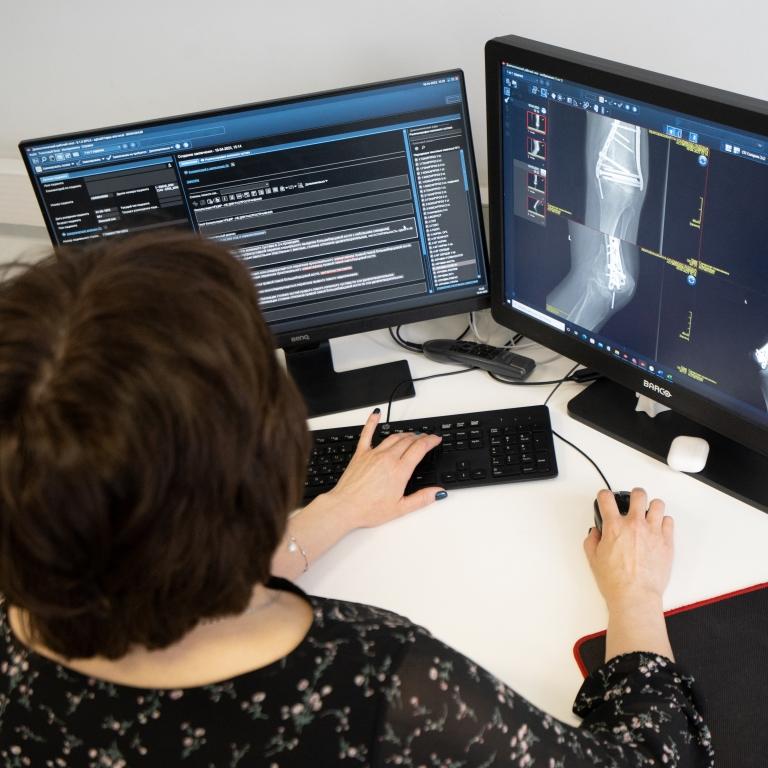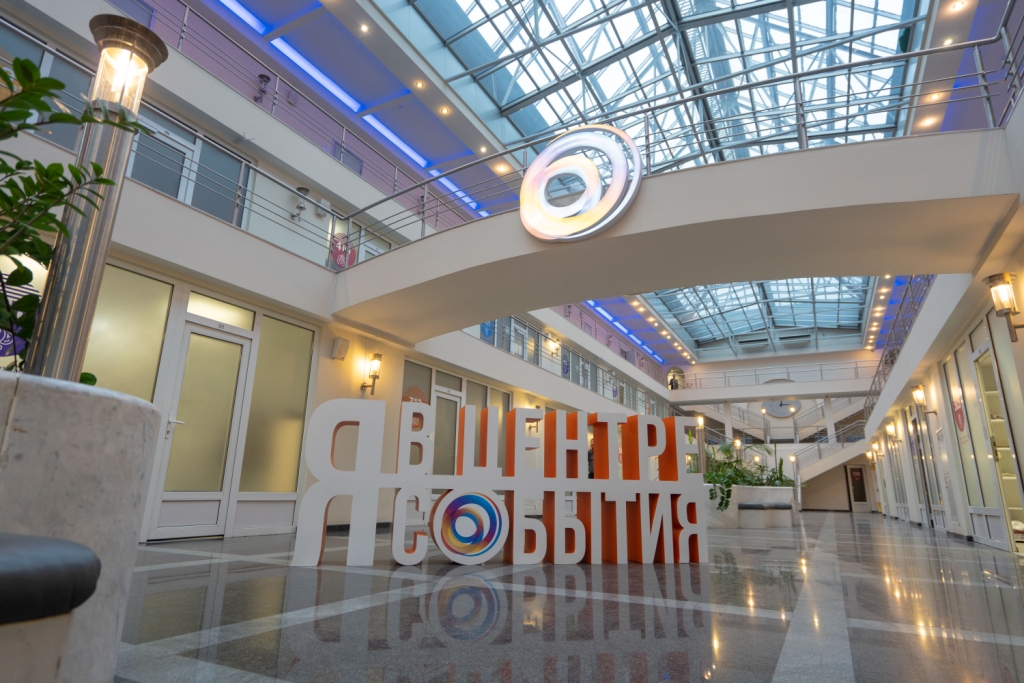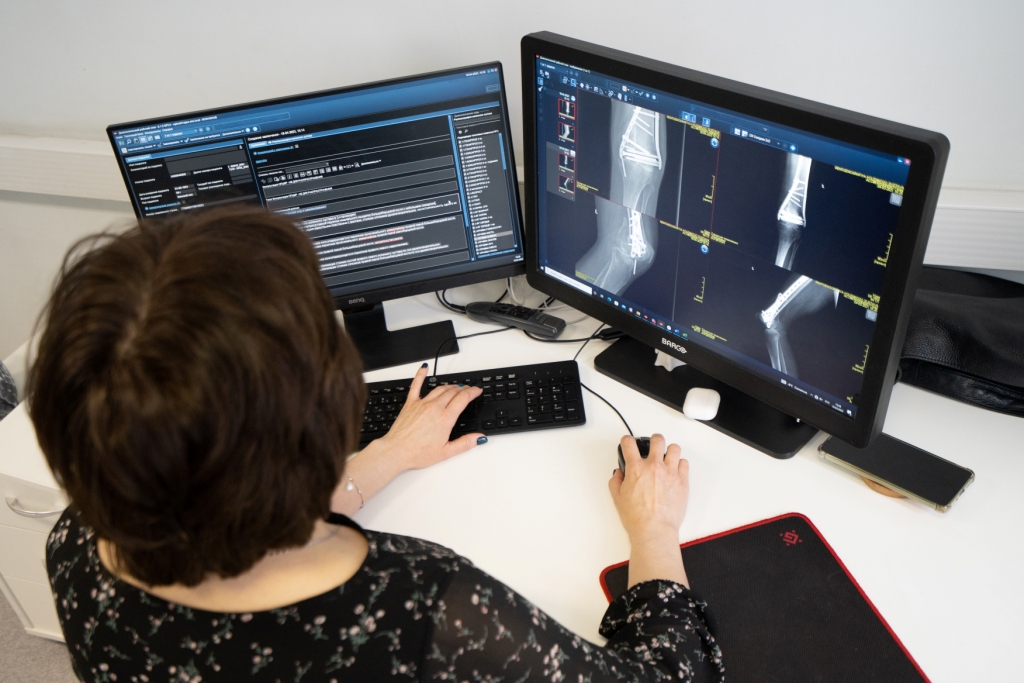
- Let me start straight away with a loaded question, which worries a lot of people. Being a telemedicine center, you operate remotely. How do you establish an accurate diagnosis, when you do not see/examine a patient?
- In 2020 our organization established the Moscow Reference Center. This is Russia’s first tele-radiology center, established in the state healthcare system. The Center employs radiologists, remotely reviewing imaging scans, made by diagnostics equipment at adult polyclinics and hospitals of Moscow. Imaging studies are performed in the Unified Radiology Information Service (URIS) of the Unified Medical Information Analysis System (UMIAS) – the digital environment of Moscow’s diagnostic radiology service. Radiologists do not contact patients and only require medical images for their studies. Along with this, radiologists could review patient history from an electronic medical record, registered in UMIAS.
Every week our doctors review about 100 thousand of CT, MRI, mammograms and X-ray images, including densitometry images.
The Reference Center actively uses digital assistants: Voice2Med voice typing technology and artificial intelligence services.

- Could you please speak of successful cases of implementation of artificial intelligence in applied medicine?
- Algorithms have been used for four years under the Pilot implementation of computer vision technologies, a project of the Social Development Complex of the Moscow City Hall, based on the MHD Center for diagnostics and telemedicine with support from the Information Technologies Department. The Center has become a platform for development of artificial intelligence technologies in Russia. Artificial intelligence services have been integrated into URIS UMIAS. About 150 healthcare organizations of Moscow, including child healthcare, have been given opportunities to utilize innovative technologies.
Today artificial intelligence helps identify disease markers in 21 areas, and the number of radiology images, processed by AI, has gone over 9 million. The Pilot involves 1500 radiologists, the research pipeline features over 50 AI services by 22 IT companies – developers of artificial intelligence. More than 20 algorithms, featured in the project, got state registration as medical product, which means they can also operate outside of the Pilot.
- How is the process managed?
- Artificial intelligence services identify pathological characteristics at medical images of patients. The operating principle is the following: a patient visits a clinic for a CT scan of lungs. An X-ray technician performs the procedure. The medical image is immediately fed into URIS, from where it is automatically routed for neural network analysis. A radiologist, interpreting the image, could use findings and calculations by artificial intelligence. A ready report is saved in URIS and is immediately available to an attending doctor and to a patient in his electronic medical record.
Experts of the center make a major contribution into development of the artificial intelligence services market in radiology. It is safe to say that three years ago there was no official market of these services. Now the full cycle is available: from AI service development to its registration as a medical product.

- What is the level of involvement of Russian regions in the process?
- In 2022 the Pilot was joined by Yamalo-Nenets Autonomous Okrug, the Center’s proprietary HUB Telemed platform provides for interaction of 14 hospitals of the region with the best artificial intelligence services. Over 27 thousand images have been reviewed. We are ready for cooperation with other Russian regions and foreign hospitals as well.
- What are other activities of your Center?
- Scientific development is an important area of our activities.
For instance, our experts provide scientific assessment of computer vision technology capabilities to improve performance efficiency of radiology diagnostics services, develop proposals to standardize testing, approval and introduction into clinical practice of artificial intelligence technologies, prepare first All-Union State Standards (GOST).
Articles by our researchers are published in the best Russian and global magazines. Researchers of the Center take part in international research efforts. Scientific research results and discoveries by experts of the Center are primarily related to updating, validation, improving performance efficiency of artificial intelligence services, scientific evidence for implementation of algorithms into radiology diagnostics. Moreover, we publish Digital Diagnostics, our own peer-reviewed academic international magazine in three languages — Russian, Chinese and English, the journal is registered in Scopus and in the list of the Higher Attestation Committee.
Recently we have announced admission to a radiology diagnostics postgraduate training program, and generally, we have been educational activities since 2016. We are training radiologists, ultrasound and functional diagnostics doctors, department heads and X-ray technicians both in Russia and abroad.

